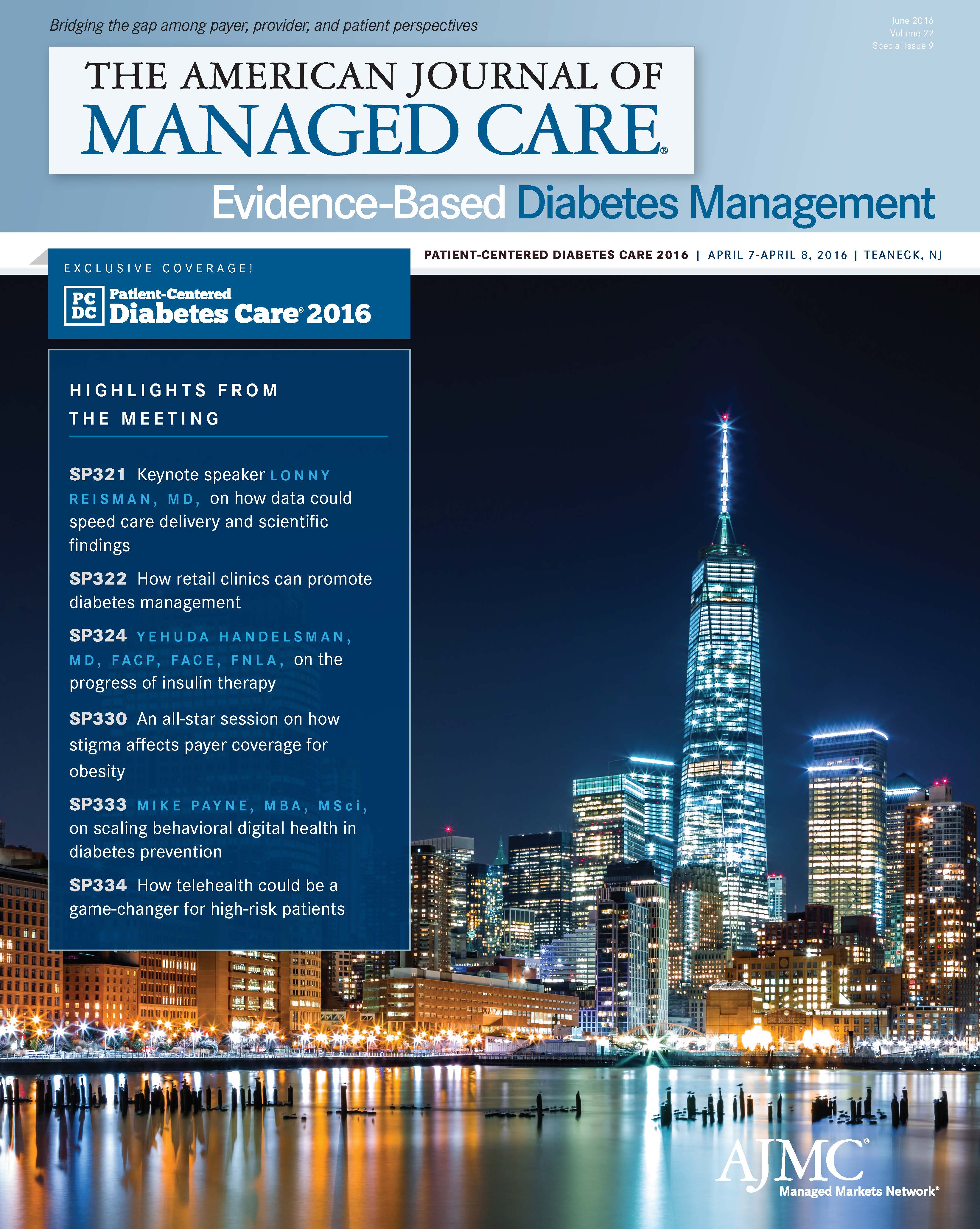Publication
Article
Evidence-Based Diabetes Management
Telehealth in Diabetes Care: Patient Acceptance Exceeds Reimbursement
Author(s):
Coverage from Patient-Centered Diabetes Care, April 7-8, 2016. Presented by The American Journal of Managed Care and Joslin Diabetes Center.
A telehealth initiative through the University of Mississippi Medical Center (UMMC) is boosting medication adherence among poor patients with diabetes and keeping them out of the emergency department (ED). Getting these results elsewhere might be difficult, however.
Besides its design, the Mississippi program has another advantage: a state law that requires telehealth reimbursement. According to panelists at Patient-Centered Diabetes Care, payer coverage for telehealth is at a crossroads: without evidence, it’s hard to expand reimbursement; without payment, it’s hard to gather data that confirm telehealth is ideal for that “in-between time” when the doctor is not present.
Teasarnee Davis, DNP, APRN-BC, lead nurse practitioner for the UMMC Center for Telehealth, explained that the results of a study nearing conclusion are showing 96% medication adherence thus far. About 180 participants from the Mississippi Delta—all of whom had at least 1 hospital admission related to diabetes— were given a preloaded tablet and peripherals, such as a glucometer.
Patients receive a daily health lesson at a time they choose, and nurses working remotely track their clinical signs and intervene immediately if blood sugar rises or the patient skips therapy. The early results are promising: when Davis said that there had been no ED readmissions for diabetes among the first 100 participants, the audience gasped.
Without telehealth, Davis said, there was no way to know, in real time, if patients stopped medication due to stomach discomfort. “If they don’t have anyone to talk to, or they’re not serious about taking it, they’ll stop it and you won’t know until they come back to the clinic,” she said.
Davis said the daily contact, along with positive support—not criticism—if a patient strays off dietary requirements, are keys to success. If there’s a grandmother whose blood sugar shot up to 300 because she ate her grandchild’s birthday cake, nurses will not say, “Shame on you; you shouldn’t eat that birthday cake,” but rather, “This is how much birthday cake you should eat,” she said. Teaching patients to build their diet around family celebrations is more realistic than telling them to never eat dessert. When UMMC publishes its results, it will help build the case for reimbursement, a step other panelists said would go a long way to making telehealth scalable.
Anne Schmidt, MD, associate medical director for Blue Cross Blue Shield of Alabama, said payers definitely need evidence to support telehealth— and it’s covered in some circumstances in her state. Schmidt agreed that the opportunity for daily monitoring between physician visits, “when life happens,” held great promise in diabetes care. Besides monitoring, technology offers the possibility of “a sea change in the way that we’re providing education.”
Unfortunately, Mississippi’s parity law is more the exception than the norm. Kristen Mc- Govern of Sirona Strategies, which represents the Alliance for Connected Care, said CMS and Medicare lag behind with treatment reimbursement. Speaking to the health systems representatives in attendance, McGovern said that the transition to value-based care models will mean “it’s going to be increasingly important for you to know what’s happening when (patients) leave your facility, because you’re going to be accountable for their outcomes.”
The bottom line, Schmidt said, is that a lot of what’s been tried to rein in diabetes has not worked and it’s time to try something new. “I think we need to listen to our patients more, because then when we talk about patient-centered medicine or patient-centered prevention, the first thing is, ‘Ask what they need, and listen to the answers.’”
The exchange between McGovern and Schmidt revealed the quandary that telehealth faces. According to a survey by the Health Care Cost Institute, reimbursement remains especially low among Medicaid providers, where it arguably could make the greatest difference. However, 89% of patients who used it said it improved their health.1
Moderator David Brumley, MD, MBA, senior medical director at Tufts Health Plan, asked McGovern to address fears that telehealth will increase utilization. McGovern said a study commissioned by the Alliance found that 13% of patients who used telehealth might have done nothing if it had not been available. But actuaries found that figure would have to rise to 32.8% of telehealth users for utilization to reach a “tipping point” that has an adverse budget impact.2
“Please experiment with telehealth,” McGovern said, encouraging health systems to share data because plans and policymakers want to see it. “We really need a body of evidence to show that this works.”
Schmidt agreed. “The more data we have, the more evidence that we have of impact on outcomes— and we’re seeing that, obviously—then the more we can shape policy to support that,” she said. 1. Wilson FA, Trout K, Rampa S, Stimpson JP. An examination of private payer reimbursements to primary care providers for healthcare services using telehealth, United States 2009—2013. Health Care Cost Institute website. http://www.healthcostinstitute.org/files/HCCI-Issue-Brief- Examination-of-Private-Payer-Reimbursements.pdf. Published March 2016. Accessed April 8, 2016.
2. Yamamoto DH. Assessment of the feasibility and cost of replacing in-person care with acute care telehealth services. Alliance for Connected Care website. http://www.connectwithcare.org/wp-content/ uploads/2014/12/Medicare-Acute-Care-Telehealth-Feasibility.pdf. Published December 2014. Accessed May 30, 2016.






